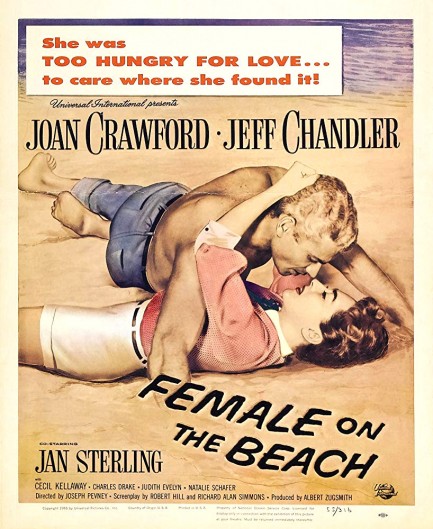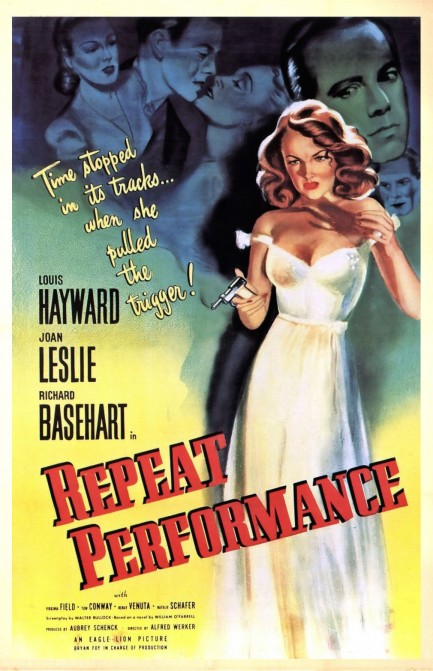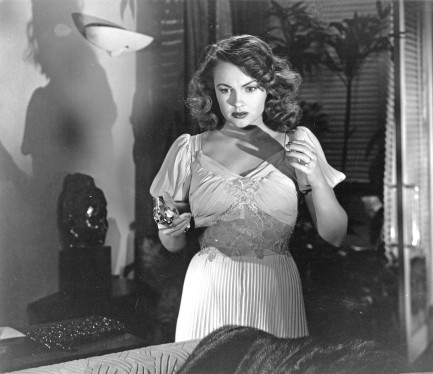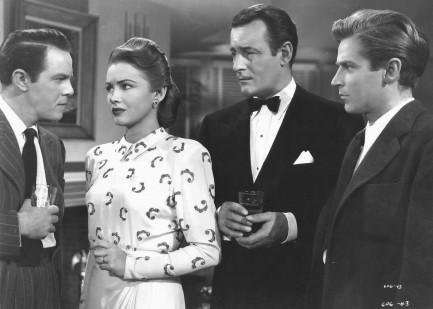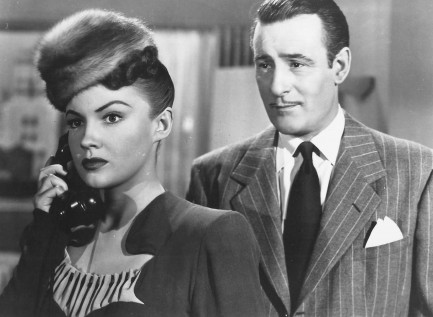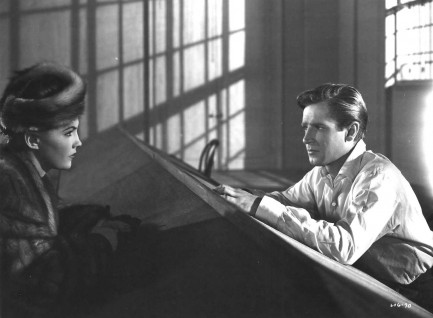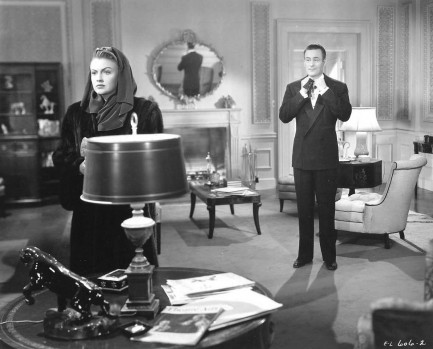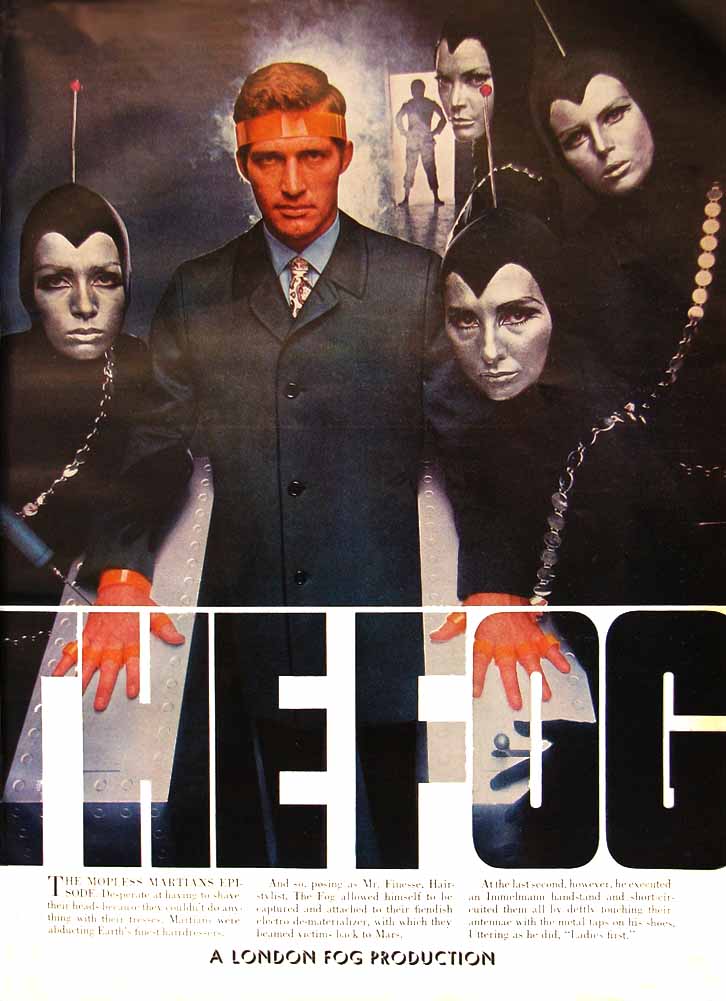
Crawford tries to get away from it all, only to have it all come to her.
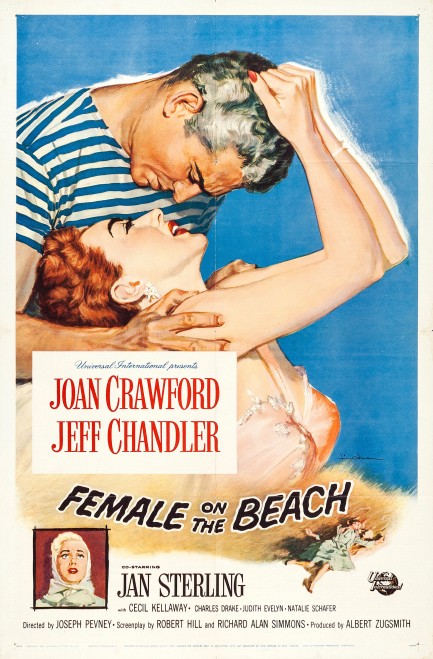
We've been neglectful of Joan Crawford, but we remedied that at least partly last night by screening her drama Female on the Beach, which premiered today in 1955. Plotwise this is pretty straightforward. Seeking peace and quiet, Crawford moves into a Newport Beach seaside house owned by her late husband. It's usually rented, but the previous tenant has just vacated the place. Crawford soon learns that the tenant vacated alright—by way of a swan dive off the deck onto the beach. But whether this was an accident, suicide, or the wicked work of someone's hand is unclear. What viewers do learn is that the neighbors—played by Cecil Kellaway and Natalie Schafer, aka Lovie Howell from Gilligan's Island—are con artists. They partner with a local boytoy played by hunky Jeff Chandler, helping him to romance vacationing women and divide them from their cash. This may be why the previous occupant of Crawford's house ended up dead.
The plot set-up is interesting enough, but the most notable aspect of Female on the Beach is that it's another one of those old movies that shows how little ownership mid-century women had over their bodies and spaces. Chandler is a lothario, which of course means he's scripted as romantically insistent, but even factoring that into his character his sheer presumption is amazing. As a viewer you absorb it on two levels: cinematically and sociologically. Chandler's behavior, though fictional, is rooted in 1950s reality. The filmmakers wanted him to be forward but a little charming, and that fact will instill within you a sense of wonder and amazement at what women were expected to endure. Chandler paws and manhandles Crawford against her will, and when she objects he treats her as though something is wrong with her. He refuses to remove his boat from her pier, enters her house without permission and refuses leave when asked, answers a knock at her door though told not to do so, initially avoids returning a key he acquired before she moved in, feels her leg without consent, embraces her against her will, and more. “A woman's no good to a man unless she's a little afraid of him,” Chandler tells her at one point. Big red flag.
At first Crawford hates the guy, but eventually he sucks her in by pouting, being surly, pretending a loss of interest. We'd say nobody would fall for it, but we've seen it work. When Crawford finds a diary hidden by the dead woman she learns about Chandler's scams, but even this won't scare her off. She just can't resist the big lug. Is he a killer? Is she a moron? Do viewers need so many hints that the railing of her beach house is ready to give way? All of these are pertinent questions, but in terms of enjoying Female on the Beach what's most important is whether you can accept Crawford's attraction to Chandler's retrograde alpha male. If so, then lay on. But even if watching their antics sets your teeth on edge, the movie is probably worth a viewing just to see an evil Mrs. Howell. If all else fails, perhaps you'll want to watch it to observe Joan Crawford at work. She was one of Hollywood's great stars—even in not-great movies. That's Female on the Beach—not great, but not bad.
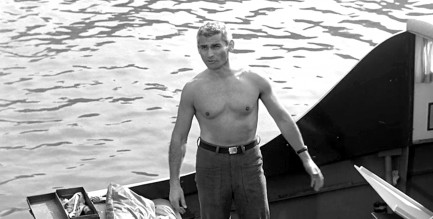 Hi, take a real good look at me, baby, because I'll be your stalker.
Hi, take a real good look at me, baby, because I'll be your stalker.
 See? Stalking. Here I am in your kitchen this morning without permission.
See? Stalking. Here I am in your kitchen this morning without permission.
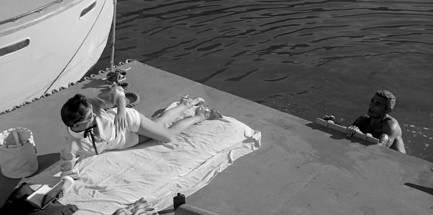 Surprise! Stalking! This time I swam all the way across the bay to stalk you.
Surprise! Stalking! This time I swam all the way across the bay to stalk you.

 Lovely calves. Shapely but not too developed. Which means you won't be able to outrun me.
Lovely calves. Shapely but not too developed. Which means you won't be able to outrun me.
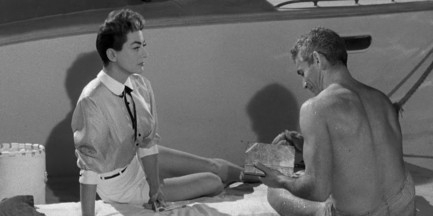 Is this your diary? I'm gonna read it. I know—presumptuous as hell, right?
Is this your diary? I'm gonna read it. I know—presumptuous as hell, right?
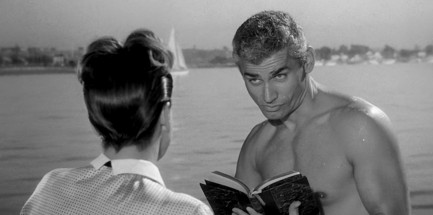 Wow. You write that I'm a walking vomit stain with sadistic eyes, the manners of a crocodile, and a bulge in my swimsuit the size of a wine cork.
Wow. You write that I'm a walking vomit stain with sadistic eyes, the manners of a crocodile, and a bulge in my swimsuit the size of a wine cork.
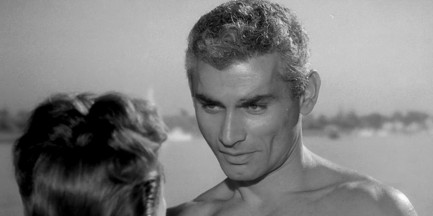 You've been looking at my bulge, eh?
You've been looking at my bulge, eh?
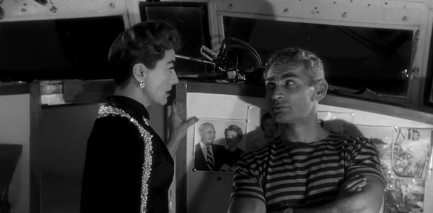 I hate you, lady. That's reverse psychology. It's right out of the stalker's handbook.
I hate you, lady. That's reverse psychology. It's right out of the stalker's handbook.
 Not so fast, Joan. What do you take me for? Let the delicious irony stretch out a little. In fact, maybe I won't even kiss you. That'd teach you.
Not so fast, Joan. What do you take me for? Let the delicious irony stretch out a little. In fact, maybe I won't even kiss you. That'd teach you.
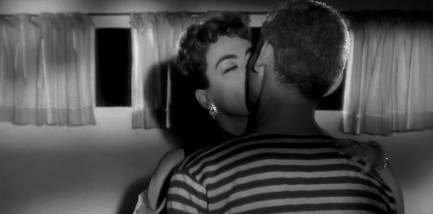 Just kidding. Let's do this. Tonsils here I come.
Just kidding. Let's do this. Tonsils here I come.
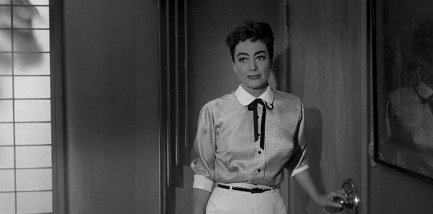 There's something about that man...
There's something about that man...


 Hi, take a real good look at me, baby, because I'll be your stalker.
Hi, take a real good look at me, baby, because I'll be your stalker. See? Stalking. Here I am in your kitchen this morning without permission.
See? Stalking. Here I am in your kitchen this morning without permission. Surprise! Stalking! This time I swam all the way across the bay to stalk you.
Surprise! Stalking! This time I swam all the way across the bay to stalk you.
 Lovely calves. Shapely but not too developed. Which means you won't be able to outrun me.
Lovely calves. Shapely but not too developed. Which means you won't be able to outrun me. Is this your diary? I'm gonna read it. I know—presumptuous as hell, right?
Is this your diary? I'm gonna read it. I know—presumptuous as hell, right? Wow. You write that I'm a walking vomit stain with sadistic eyes, the manners of a crocodile, and a bulge in my swimsuit the size of a wine cork.
Wow. You write that I'm a walking vomit stain with sadistic eyes, the manners of a crocodile, and a bulge in my swimsuit the size of a wine cork. You've been looking at my bulge, eh?
You've been looking at my bulge, eh? I hate you, lady. That's reverse psychology. It's right out of the stalker's handbook.
I hate you, lady. That's reverse psychology. It's right out of the stalker's handbook. Not so fast, Joan. What do you take me for? Let the delicious irony stretch out a little. In fact, maybe I won't even kiss you. That'd teach you.
Not so fast, Joan. What do you take me for? Let the delicious irony stretch out a little. In fact, maybe I won't even kiss you. That'd teach you. Just kidding. Let's do this. Tonsils here I come.
Just kidding. Let's do this. Tonsils here I come. There's something about that man...
There's something about that man...